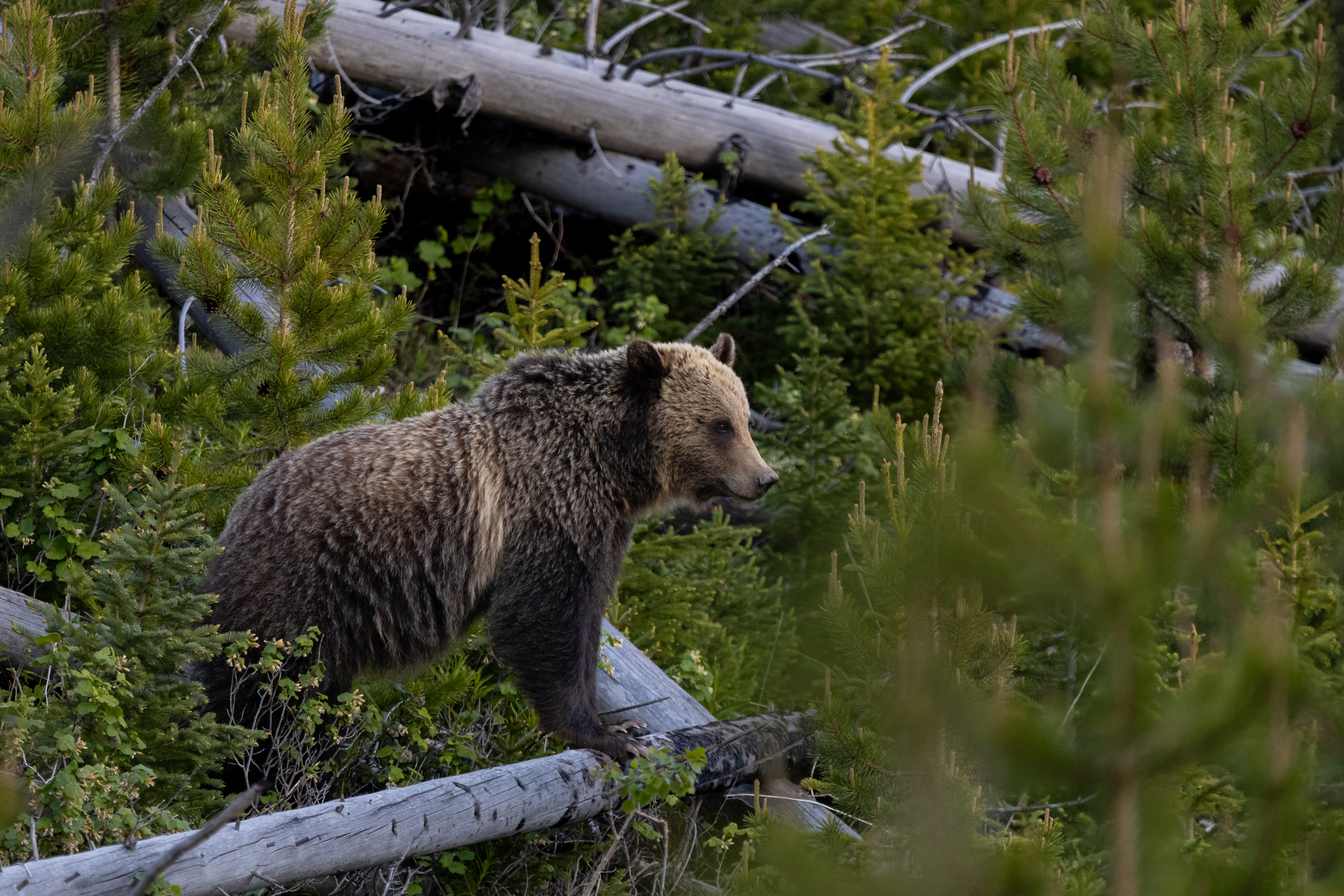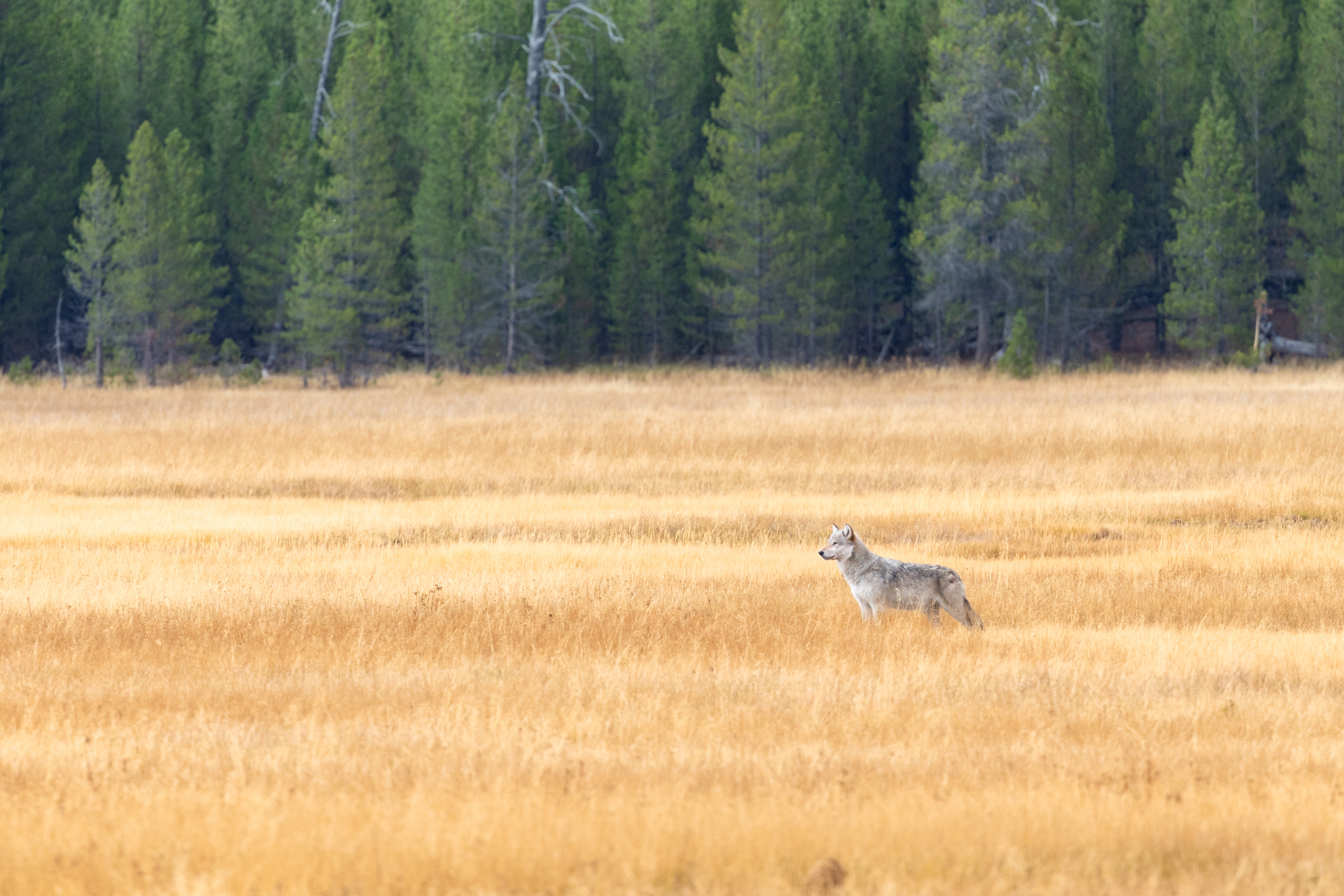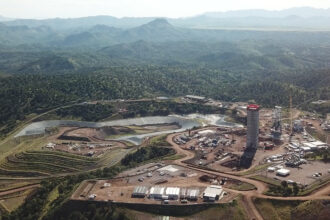When the U.S. Fish and Wildlife Service reintroduced 14 gray wolves to Yellowstone National Park in 1995, the animals were, in some ways, stepping into a new world.
After humans hunted wolves to near-extinction across the Western U.S. in the early 20th century, the carnivore’s absence likely altered ecosystems and food webs across the Rocky Mountains. Once wolves were reintroduced to the landscape, scientists hoped to learn if, and how quickly, these changes could be reversed.
Despite studies claiming to show early evidence of a tantalizing relationship between wolves and regenerating riparian ecosystems since the canines returned to Yellowstone, scientists are still debating how large carnivores impact vegetation and other animals, according to a new paper published this month.
The scientific intrigue centers on the degree to which carnivores have an indirect effect on other fauna and flora, a dynamic scientists call a “trophic cascade.” Beginning in the early 2000s, several studies appeared to show evidence of a transformational relationship between wolves, elk and riparian vegetation in Yellowstone.
But as more time has passed, other studies have suggested that Yellowstone wolves’ connection to the park’s riparian ecosystems may be more subtle than previously believed.
“It’s not that there’s not evidence consistent with a trophic cascade in Yellowstone,” said Chris Wilmers, a professor of wildlife ecology at the University of California Santa Cruz, and the paper’s lead author. “It’s that the effects are a lot more complicated and weaker than what was initially thought.”
The theory of wolves changing the landscapes and vegetation along streams and rivers in Yellowstone was born out of the changes scientists observed in the park after human hunting decimated beaver and wolf populations. More elk and other ungulates dominated the landscape, grazing riparian vegetation on the open banks of streams whose dams were no longer as robustly maintained by beavers. Water began moving through the park more rapidly, carving riverbeds into deep v-shapes and lowering the water table. This, in turn, diminished over-grazed riparian vegetation habitat, leaving less material for any remaining beavers to dam the waterways. All this caused a negative feedback loop that dried out areas around the park’s streams.
When wolves were reintroduced to Yellowstone, some scientists reported that they altered elk grazing patterns, causing them to become skittish about spending prolonged periods in open riparian habitat. This helped willow and aspen trees along stream banks regenerate, perhaps an early indication of a trophic cascade, one that could give beavers more material to slow flows and reduce waterside erosion.
But other scientists have questioned these theories, and for the new paper, Wilmers and four other researchers expanded the focus from wolves to include pumas and bears, other large carnivores that are recovering from the brink of human-driven extinction across the West.
In an analysis of about 170 citations published since the 1930s, Wilmers and his team found clear evidence of predator-induced trophic cascades in only limited circumstances. On Isle Royal National Park, a nearly 207-square-mile chunk of land in northwestern Lake Superior, for instance, wolves diminished moose populations to the point that trees grew taller. But in Yellowstone, a more than 3,000-square-mile park in the heart of one of North America’s most intact ecosystems, the connection between the predator’s reintroduction and changes in vegetation has generated more debate.
In 2024, researchers at Colorado State University published a 20-year study finding that willows fenced from grazers near simulated beaver dams in Yellowstone grew faster than both unfenced willows near dams and fenced or unfenced willows without dams, suggesting wolves’ presence alone may not be enough to improve the park’s riparian habitat. Without more beaver activity and healthier riparian vegetation, Yellowstone appeared locked in an “alternative stable state,” in which eroded stream banks and lower groundwater levels persist on a dry landscape, “caused primarily by the extirpation of apex predators during the early 20th century,” the researchers concluded.
Other research has shown that, since wolves returned to the park, human hunting, puma recovery and grizzly predation on calves have also influenced elk populations, and growing bison herds may also account for diminished vegetation heights. Even irrigated fields outside the park could be influencing elk behavior.

Without a clear link between wolf predation and the decline of elk populations, the foundation for a scientific determination of a trophic cascade is too shaky to build upon, Wilmers concluded in the paper.
He said he was surprised by how few studies show evidence of wolves, bears and cougars having an effect on elk, moose and deer populations. Instead, the biggest driver of changing elk population numbers across the West is humanity.
“In most mainland systems, it’s only when you combine wolves with grizzly bears and you take away human hunting as a substantial component that you see them suppressing prey numbers,” Wilmers said. “Outside of that, they’re mostly background noise against how humans are managing their prey populations.”
In some studies, ungulate populations actually increased slightly in the presence of wolves and grizzlies, Wilmers said, likely because human wildlife managers overestimated the effects of predators as they reduced hunting quotas.
This story is funded by readers like you.
Our nonprofit newsroom provides award-winning climate coverage free of charge and advertising. We rely on donations from readers like you to keep going. Please donate now to support our work.
Donate Now“This is a much-needed review, as it is well executed, and highlights areas where more research is needed,” said Rae Wynn-Grant, a wildlife ecologist and cohost of the television show “Mutual of Omaha’s Wild Kingdom Protecting the Wild,” in an email to Inside Climate News. Wynn-Grant was not involved in the paper, and her work was not part of its survey.
In her view, the paper showed that an increase in predators on the landscape doesn’t automatically balance plant communities. “Our world would be much simpler if it did,” she said, “but the evidence suggests that so many variables factor into if and how ecosystems respond to increases in carnivore population in North America.”
Yellowstone, with its expansive valleys, relatively easy access and status as an iconic, protected landscape, has become a hotspot for scientists trying to answer an existential question: Is it possible for an ecosystem that’s lost keystone large carnivores to be restored to a pre-extinction state upon their reintroduction?
Wilmers doesn’t think scientists have answered that question yet, except to show that it can take decades to untangle the web of factors driving ecological shifts in a place like Yellowstone. Any changes that do occur when a predator is driven to extinction may be impossible to reverse quickly, he said.
Yellowstone’s alternative stable state was a point echoed by researchers in both camps of the trophic cascade debate, and it is one Wilmers believes is vital to understand when evaluating the tradeoffs of large-carnivore reintroduction.
“You’d be better off avoiding the loss of beavers and wolves in the first place than you would be accepting that loss and trying to restore them later,” he said.
About This Story
Perhaps you noticed: This story, like all the news we publish, is free to read. That’s because Inside Climate News is a 501c3 nonprofit organization. We do not charge a subscription fee, lock our news behind a paywall, or clutter our website with ads. We make our news on climate and the environment freely available to you and anyone who wants it.
That’s not all. We also share our news for free with scores of other media organizations around the country. Many of them can’t afford to do environmental journalism of their own. We’ve built bureaus from coast to coast to report local stories, collaborate with local newsrooms and co-publish articles so that this vital work is shared as widely as possible.
Two of us launched ICN in 2007. Six years later we earned a Pulitzer Prize for National Reporting, and now we run the oldest and largest dedicated climate newsroom in the nation. We tell the story in all its complexity. We hold polluters accountable. We expose environmental injustice. We debunk misinformation. We scrutinize solutions and inspire action.
Donations from readers like you fund every aspect of what we do. If you don’t already, will you support our ongoing work, our reporting on the biggest crisis facing our planet, and help us reach even more readers in more places?
Please take a moment to make a tax-deductible donation. Every one of them makes a difference.
Thank you,













